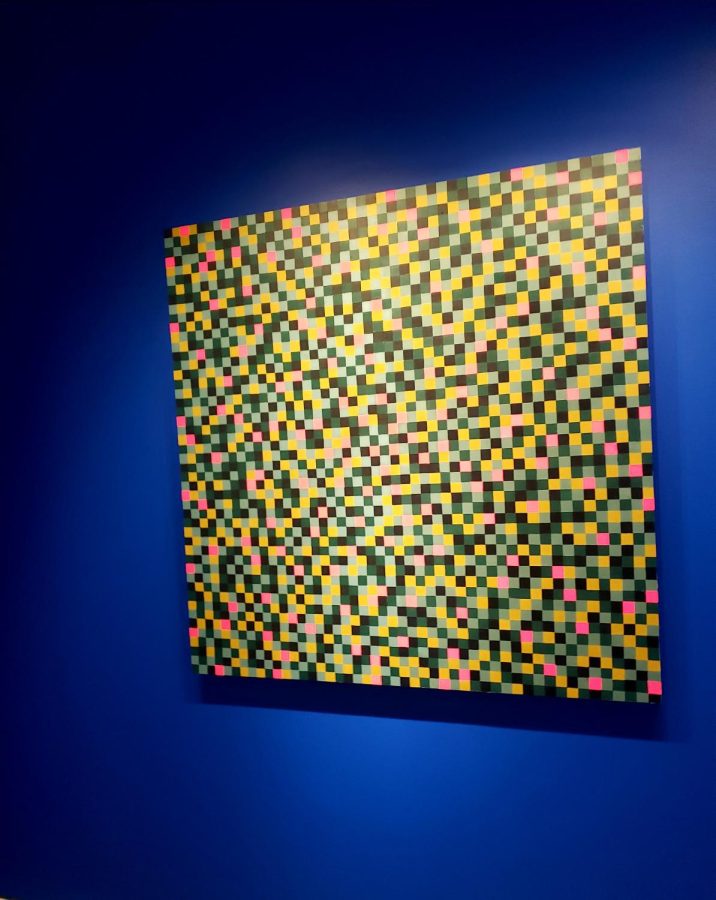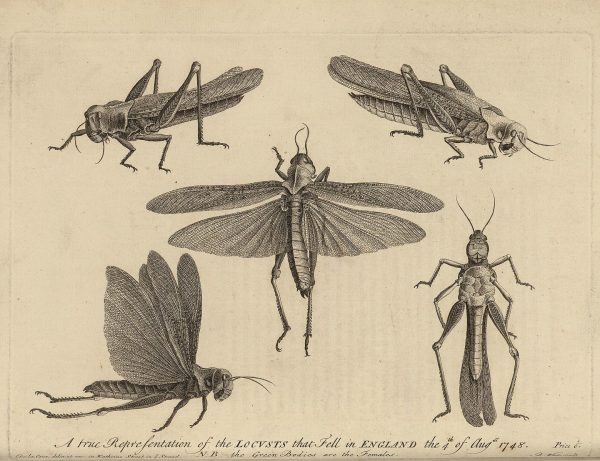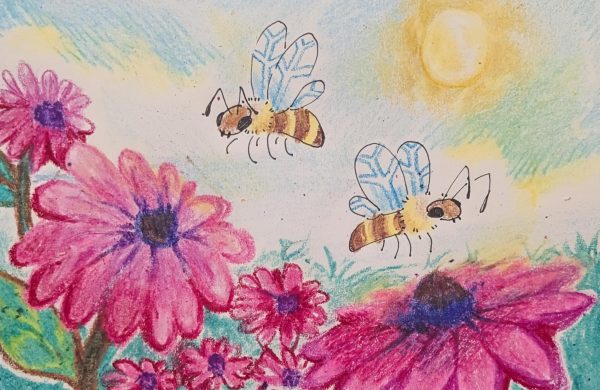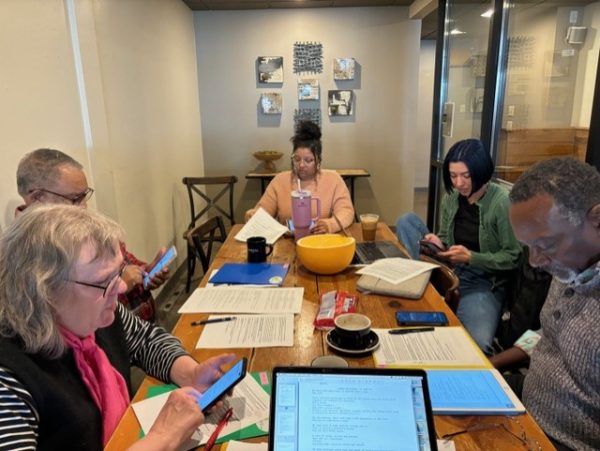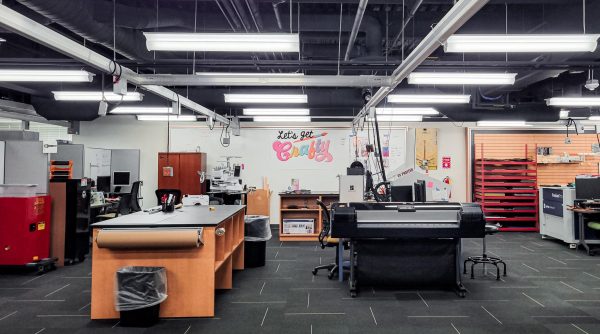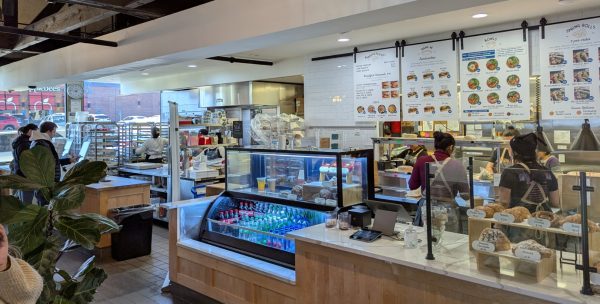“No Signal” Starts the Conversation
Currently the Century College Art Gallery is proud to host cross-disciplinary Minneapolis based artist and educator Meagan Marsh-Pine’s installation, No Signal. Moving through the gallery, guests will be treated to an investigation into the digital and physical intersections of the contemporary landscape. A wall of active QR codes engages the viewer with websites that connect to the dynamic and converging conversation on the natural environment that No Signal represents. I was able to catch up with the busy artist and ask them a few questions.
TCT: How did you come up with the concept for NO SIGNAL and its name?
MM-P: The concept came pretty naturally. I am interested in the relationships between our digital and physical realities and their increasing interconnectedness. Photographs especially work to reflect and/or shape reality. They have the ability to function as a document, but they can also be edited, photoshopped, and scripted, making it an incredibly slippery medium. They make up a lot of our digital space, and I am interested in the impacts they have on our reality. In NO SIGNAL, I investigate the slipping between realities that occurs between representations of the environment in the digital space and physical landscape, specifically looking at representations of the landscape in the digital space.
TCT: You have exhibited this work in both the West Coast and the Midwest, so what is the biggest difference you’ve seen in how your work is viewed?
MM-P: The connection to place is more direct out west. In the Midwest, Yosemite, where most of my imagery is sourced from, seems to come across as more of an iconic site, a place of the American Imagination. Which is true out west as well, but I think generally people are more familiar with these iconic landscapes, and they tend to bring their own relationships into the work in a different way. It’s not a massive difference between audiences, more so, just the ways people have viewed the landscape and their relationships with it are different, so that affects how they approach the work.
TCT: I wonder if you can tell us which artists have influenced your work?
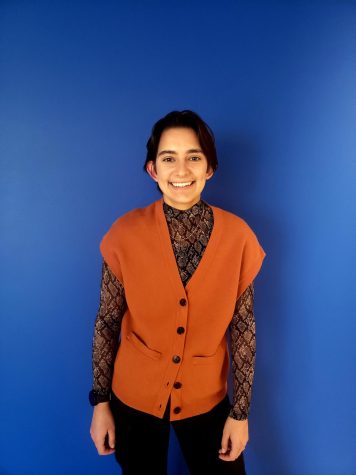
MM-P: So many people. My work considers the history of landscape photography in the US. So, photographers like Timothy O’Sullivan and Carleton Watkins who made some of the first images of the West while working as survey photographers for the US government directly influences my work. Often, I think about how their images were used and how they framed the landscape is still relevant in today’s landscapes. I am also very inspired by the work and writing of Hito Steryl; her essay In Free Fall: A Thought Experiment on Vertical Perspective influenced how I was thinking about perspective when it comes to contemporary representations of landscape and influenced how I approached the paintings as well as the video pieces in the exhibition.
MM-P: Lastly, in a more direct way, the people around me influence my work. This is part of the reason one of my pieces of advice is connecting with your artistic community. Conversations with my peers, friends, and mentors helps me to see different perspectives and they help me grow as an artist.
TCT: What would you like others to learn from your work?
MM-P: That’s a great question and one that I think about a lot and my answer changes often. I guess one thing that stays consistent is that I want people to think about how images are constructed and how the ways we view and interact with them shapes or informs how we see and interact with the world.
TCT: Finally, what is some advice you would give to students who are interested in pursuing an art degree, or growing as an artist?
MM-P: My biggest piece of advice is to keep making work. If you have an idea, make it. Make it before you have time to overthink it. There is intelligence in the process of making, let that inform you.
MM-P: I would also suggest you find ways to connect with your artistic community. Show up to events and openings. Seeing other people’s work and connecting with other artists is so important.
MM-P: Lastly, find ways to exhibit your work. Someone once told me that part of our jobs as artists is to show our work and that really stuck with me. Look at open call websites and find opportunities that fit your work and apply. Check these websites regularly, keep a list of what you applied for and whether or not you were accepted.
TCT: Thank you, Meagan, that is some great advice! Thank you for taking time out of your busy schedule to talk with me!
Meagan has exhibited nationally, including at Texas Tech University (TX), Century College Gallery (MN), Chase Gallery (WA), PAPA Projects (MN), and Gallery 263 (MA). They have been included in a number of national publications, most notably Witness which is housed in the Museum of Modern Art’s Library, as well as other collections.
Interested in learning more about the artist and their work?
You can check out their website at:
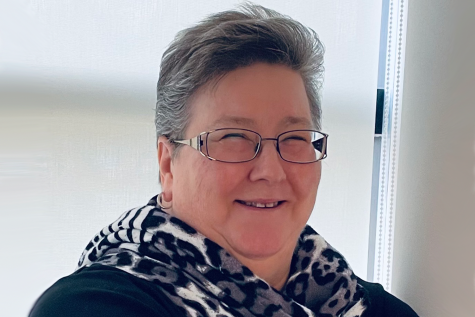
Monika Rogge is an artist, photographer, and poet based in Stillwater, MN. She is currently an AFA student at Century College.
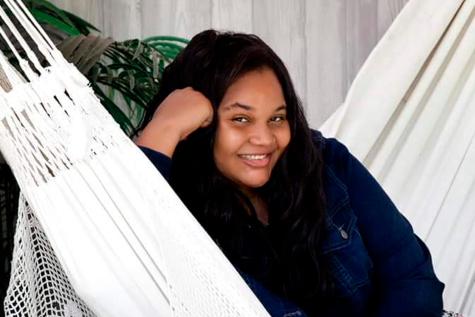
Hello! I am Kaylin, a photographer for Century Time. This is my second year on the team and second year of being at Century college. My major is photographer...



